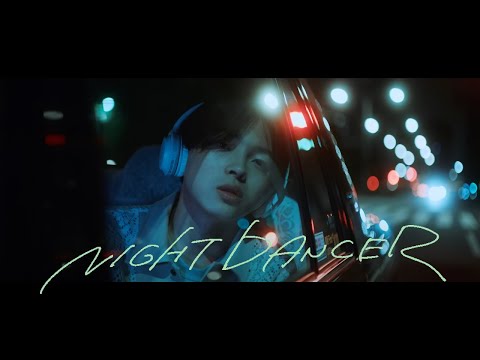Dancer Job: Exciting Career with Competitive Salary

Dancer Job Description Template
Dancer Job Description A dancer is an individual who uses movement and expression to communicate ideas, emotions, and stories through various forms of dance. They are highly skilled performers who dedicate their lives to perfecting their technique, choreography, and physical fitness. Responsibilities: – Learning and practicing a wide range of dance styles, including ballet, contemporary, jazz, hip-hop, and tap. – Attending regular dance classes and rehearsals to improve technique and performance skills. – Collaborating with choreographers and fellow dancers to create and perform dance routines. – Memorizing and interpreting choreography to convey specific themes or narratives. – Maintaining physical fitness and stamina through regular exercise and conditioning. – Participating in auditions and performances, both individually and as part of a dance troupe or company. – Adapting dance routines to suit different venues, audiences, and performance spaces. – Incorporating props, costumes, and lighting effects into dance performances. – Continuously learning and evolving as a dancer by attending workshops, seminars, and professional development opportunities. – Promoting dance as an art form through public performances, demonstrations, and workshops. Dancers must possess exceptional physical coordination, strength, flexibility, and stamina. They should also have a strong sense of rhythm and musicality, as well as the ability to express emotions through movement. Dedication, discipline, and perseverance are crucial qualities for dancers, as they often face intense competition and rigorous training schedules. Important Skills: 1. Artistic Expression: Dancers must be able to convey emotions and tell stories through their movements, using their bodies as a means of artistic expression. 2. Collaboration: Dancers often work closely with choreographers and other dancers, requiring strong teamwork and communication skills to create synchronized and cohesive performances. Overall, dancers play a vital role in the performing arts industry, captivating audiences with their skill, passion, and creativity.Dancer Responsibilities
Dancer Requirements
How Much Does A Dancer Make?
Dancer Salary
| Dancer Type | Salary Range |
|---|---|
| Ballet Dancer | $30,000 – $100,000 per year |
| Contemporary Dancer | $25,000 – $80,000 per year |
| Hip Hop Dancer | $20,000 – $70,000 per year |
| Jazz Dancer | $15,000 – $60,000 per year |
Dancer Salary refers to the amount of money earned by dancers in various dance genres. The salary range can vary depending on factors such as experience, skill level, location, and the type of performance (e.g., stage, film, television, or commercial). Ballet dancers tend to have higher earning potential compared to other dance styles, with a salary range of $30,000 to $100,000 per year. Contemporary dancers earn between $25,000 and $80,000 per year, while hip hop dancers earn between $20,000 and $70,000 per year. Jazz dancers typically earn between $15,000 and $60,000 per year. These salary ranges are approximate and can vary based on individual circumstances and opportunities available in the dance industry.
Dancer Salaries by Country
Top Paying Countries for Dancer
| Country | Average Salary |
|---|---|
| United States | $45,000 |
| United Kingdom | £35,000 |
| Australia | AUD 55,000 |
| Canada | CAD 50,000 |
| Germany | €40,000 |
Being a dancer can be a rewarding career both artistically and financially. However, the salary of dancers can vary greatly depending on the country they work in. According to recent data, the top paying countries for dancers are the United States, United Kingdom, Australia, Canada, and Germany. In the United States, dancers earn an average salary of $45,000 per year. In the United Kingdom, the average salary is £35,000. Australia follows closely with an average salary of AUD 55,000, while dancers in Canada earn around CAD 50,000. Germany, on the other hand, offers an average salary of €40,000. It’s important to note that these figures represent average salaries and individual earnings may vary depending on factors such as experience, expertise, and the specific dance industry. Nevertheless, dancers in these countries generally enjoy higher earning potentials compared to other parts of the world. If you aspire to become a dancer and are aiming for a higher salary, considering opportunities in these top paying countries could be a strategic move for your career.
A video on the topic Dancer
Video Source : imaseInterview Questions for Dancer
1. What inspired you to become a dancer?
I have always been passionate about dancing since I was a child. Seeing professional dancers perform on stage and watching dance shows on television inspired me to pursue a career in dance.
2. How long have you been dancing?
I have been dancing for 15 years. I started taking dance classes when I was 5 years old.
3. What is your favorite style of dance and why?
My favorite style of dance is contemporary because it allows me to express my emotions and tell stories through movement. I love the freedom and creativity that contemporary dance offers.
4. Can you describe the most challenging dance routine or performance you have done?
One of the most challenging dance routines I have done was a contemporary piece that required a lot of strength and flexibility. It involved intricate partnering work and demanding lifts, which required precise timing and coordination.
5. How do you prepare yourself physically and mentally before a performance?
Physically, I warm up my body through stretching and conditioning exercises. I also practice the choreography multiple times to ensure muscle memory. Mentally, I focus on visualizing a successful performance and channeling any nervous energy into excitement.
6. What has been the most memorable moment in your dance career so far?
The most memorable moment in my dance career so far was performing on a big stage in front of a large audience. The energy and applause from the crowd gave me an incredible sense of accomplishment and fulfillment.
7. Have you ever encountered any injuries as a dancer? How did you overcome them?
Yes, I have encountered a few injuries throughout my dance journey. When I faced injuries, I took the necessary time off to rest and recover. I also worked closely with physical therapists and followed their rehabilitation programs to get back on my feet.
8. How do you continue to improve your dance skills?
I continue to improve my dance skills by taking regular classes and workshops in various dance styles. I also seek feedback from my mentors and peers, and actively work on areas that need improvement. Additionally, I watch performances and learn from other dancers to expand my knowledge and artistry.
9. What advice would you give to aspiring dancers?
My advice to aspiring dancers would be to never give up on their dreams and to always stay dedicated and disciplined. It’s important to embrace challenges and learn from them, as they will only make you a stronger dancer. Also, remember to always enjoy the process and have fun while dancing!
10. What do you love most about being a dancer?
What I love most about being a dancer is the ability to express myself and connect with others through movement. Dance allows me to communicate without words and to share emotions and stories in a unique and powerful way. It brings me immense joy and fulfillment.
The Best Universities For The Dancer Profession.
Frequently asked questions about Dancer
What is Dancer?
How can I install Dancer?
$ cpanm Dancer
What are the advantages of using Dancer?
- Lightweight and flexible
- Easy to learn and use
- Rapid development
- Extensive plugin ecosystem
- Built-in web server for testing
- Support for various template engines
- RESTful routing






